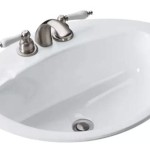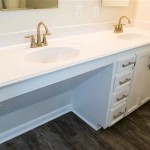How to Install a Bathroom Exhaust Fan with Roof Ventilation
Installing a bathroom exhaust fan with roof ventilation is a practical and efficient way to improve indoor air quality and prevent moisture buildup in your bathroom. This type of ventilation effectively removes excess humidity, odors, and airborne particles, creating a healthier and more comfortable environment. This article will guide you through the process of installing a bathroom exhaust fan with roof ventilation, providing clear instructions and essential tips for a successful installation.
Step 1: Planning and Preparation
Before starting the installation, it's crucial to plan and gather all necessary materials. This involves carefully considering factors such as the size and type of exhaust fan, the location of the roof vent, and the required tools and supplies. Here are some key points for planning:
- Choose the Right Fan: Determine the appropriate size and type of exhaust fan based on the bathroom's square footage. A larger bathroom requires a more powerful fan with a higher CFM (cubic feet per minute) rating.
- Roof Vent Location: Select a suitable location for the roof vent, ensuring it's at least 12 inches from any other vent or obstacle. Consider the roof slope, accessibility, and the distance from the bathroom for optimal ventilation.
- Materials and Tools: Gather essential materials, including the exhaust fan, roof vent, flashing, ductwork, insulation, screws, sealant, and appropriate tools for cutting, drilling, and fastening.
Step 2: Installation of the Roof Vent
The installation of the roof vent is a critical step, requiring proper sealing and flashing to prevent leaks. Here is a step-by-step guide:
- Cut the Opening: Carefully measure and cut an opening in the roof for the vent, following the manufacturer's specifications. Ensure the opening is large enough to accommodate the vent and flashing.
- Install Flashing: Secure the flashing around the roof opening, ensuring a tight and watertight seal. Use roofing cement or sealant to create a strong bond and prevent leaks.
- Attach the Vent: Install the roof vent, ensuring it aligns properly with the flashing and sits flush with the roof surface. Secure the vent using screws or fasteners provided by the manufacturer.
Step 3: Installing the Exhaust Fan and Ductwork
The next step involves installing the exhaust fan and connecting it to the roof vent using ductwork. This section provides a detailed guide for this process:
- Mount the Fan: Choose a suitable location for the exhaust fan, typically in the ceiling or wall of the bathroom. Mark the mounting points and drill pilot holes before attaching the fan using appropriate screws or fasteners.
- Connect Ductwork: Connect the fan's outlet to the ductwork using a flexible duct connector. Ensure a secure and airtight connection to prevent air leakage.
- Route Ductwork: Run the ductwork from the fan to the roof vent, taking the shortest and most direct route possible. Use duct tape to secure any connections and prevent air leakage.
- Insulate Ductwork: Insulate the ductwork to prevent heat loss and condensation buildup. This helps maintain optimal airflow and efficiency.
- Connect to Roof Vent: Connect the ductwork to the roof vent using a suitable connector. Ensure a tight and secure connection to prevent air leakage and ensure efficient ventilation.
Step 4: Final Touches and Testing
Once the fan, ductwork, and roof vent are installed, there are some final steps to ensure proper functionality and a neat finish:
- Secure Connections: Double-check all connections, including the fan, ductwork, and roof vent, to ensure they are secure and airtight. Use sealant or tape to address any leaks or gaps.
- Test the Fan: Turn on the fan and test its operation. Check for proper airflow, noise levels, and any signs of malfunction. If necessary, adjust the fan speed or make any adjustments to the ductwork to optimize performance.
- Ensure Proper Ventilation: Verify that the roof vent is open and unobstructed to allow for efficient air expulsion. Ensure there are no obstructions in the ductwork or near the fan that could hinder airflow.
- Finish the Installation: Install any decorative covers or grilles for the fan and roof vent, completing the final aesthetic touches of the installation.
By following these detailed steps and paying close attention to the details, you can successfully install a bathroom exhaust fan with roof ventilation. Remember to prioritize safety and follow all building codes and regulations. If you have any doubts or concerns, consult with a qualified professional for assistance.

Installing A Bathroom Fan Fine Homebuilding

Blog

Bathroom Exhaust Fan Installation Ventilation

Bathroom Exhaust Fans Building America Solution Center

I Am Stuck On A Bathroom Exhaust Vent Installation Doityourself Com Community Forums

Installing A Roof Vent Diy How To

How To Install A Bathroom Fan Diy Family Handyman

How To Install A Bathroom Exhaust Fan Lowe S

Where Do Bathroom Vents Go Lopco Contracting Ri

Roof Ventilation Tile Bathroom Exhaust Vent Extractor







